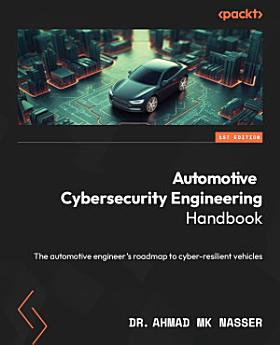Automotive Cybersecurity Engineering Handbook: The automotive engineer's roadmap to cyber-resilient vehicles
About this ebook
- Understand ISO 21434 and UNECE regulations to ensure compliance and build cyber-resilient vehicles.
- Implement threat modeling and risk assessment techniques to identify and mitigate cyber threats.
- Integrate security into the automotive development lifecycle without compromising safety or efficiency.
- Purchase of the print or Kindle book includes a free PDF eBook
- Understand automotive cybersecurity standards like ISO 21434 and UNECE REG 155-156.
- Apply threat modeling techniques to identify vulnerabilities in vehicle systems.
- Integrate cybersecurity practices into existing automotive development processes.
- Design secure firmware and software architectures for automotive ECUs.
- Perform risk analysis and prioritize cybersecurity controls for vehicle systems
- Implement cybersecurity measures at various vehicle architecture layers.
This book is for automotive engineers, cybersecurity professionals, and those transitioning into automotive security, including those familiar with functional safety and looking to integrate cybersecurity into vehicle development processes.
About the author
Dr. Ahmad MK Nasser is an automotive cybersecurity architect with a long experience in securing safety-critical systems. He started his career as a software engineer, building automotive network drivers, diagnostics protocols, and flash programming solutions. This naturally led him into the field of automotive cybersecurity, where he designed secure firmware solutions for various microcontrollers and SoCs, defined secure hardware and software architectures of embedded systems, and performed threat analysis of numerous vehicle architectures, ECUs, and smart sensors. Ahmad holds a B.S. and an M.S. in electrical and computer engineering from Wayne State University, as well as a Ph.D. in computer science from the University of Michigan in Dearborn. He is currently a principal security architect for NVIDIA's autonomous driving software platform.




